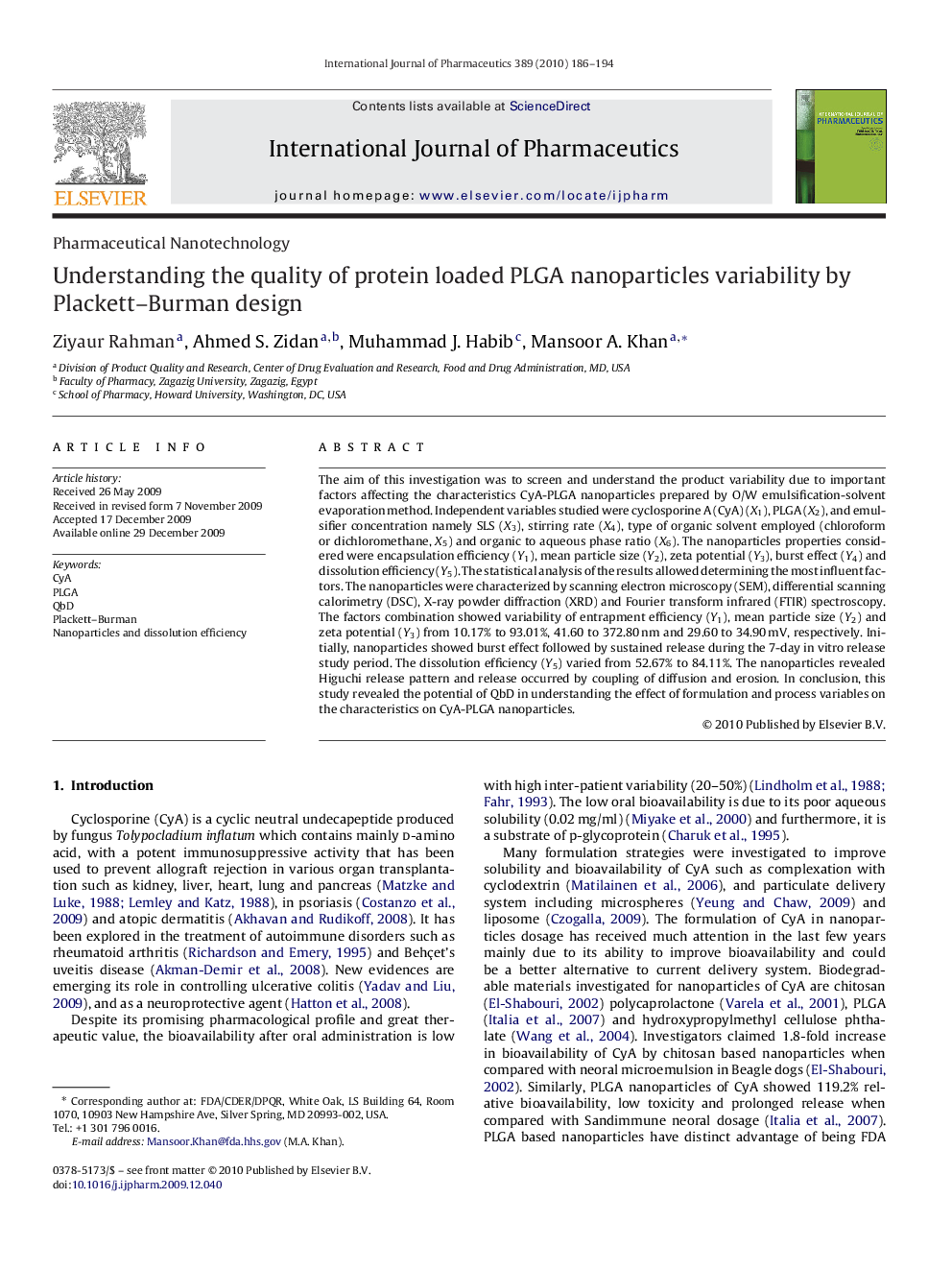| Article ID | Journal | Published Year | Pages | File Type |
|---|---|---|---|---|
| 2504223 | International Journal of Pharmaceutics | 2010 | 9 Pages |
The aim of this investigation was to screen and understand the product variability due to important factors affecting the characteristics CyA-PLGA nanoparticles prepared by O/W emulsification-solvent evaporation method. Independent variables studied were cyclosporine A (CyA) (X1), PLGA (X2), and emulsifier concentration namely SLS (X3), stirring rate (X4), type of organic solvent employed (chloroform or dichloromethane, X5) and organic to aqueous phase ratio (X6). The nanoparticles properties considered were encapsulation efficiency (Y1), mean particle size (Y2), zeta potential (Y3), burst effect (Y4) and dissolution efficiency (Y5). The statistical analysis of the results allowed determining the most influent factors. The nanoparticles were characterized by scanning electron microscopy (SEM), differential scanning calorimetry (DSC), X-ray powder diffraction (XRD) and Fourier transform infrared (FTIR) spectroscopy. The factors combination showed variability of entrapment efficiency (Y1), mean particle size (Y2) and zeta potential (Y3) from 10.17% to 93.01%, 41.60 to 372.80 nm and 29.60 to 34.90 mV, respectively. Initially, nanoparticles showed burst effect followed by sustained release during the 7-day in vitro release study period. The dissolution efficiency (Y5) varied from 52.67% to 84.11%. The nanoparticles revealed Higuchi release pattern and release occurred by coupling of diffusion and erosion. In conclusion, this study revealed the potential of QbD in understanding the effect of formulation and process variables on the characteristics on CyA-PLGA nanoparticles.
